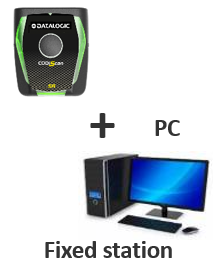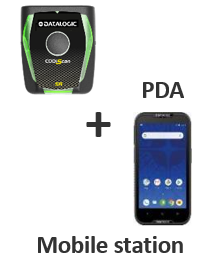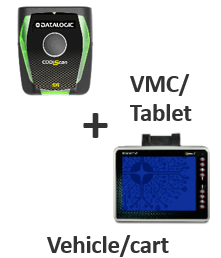Ditch the Desk: Why Wearable Solutions are Revolutionizing Work
29/Apr/2024
Introduction
The modern workplace is constantly evolving. Gone are the days of chained-to-desk employees; today's workforce thrives on mobility and flexibility. This shift presents a challenge: how can workers access the information and tools they need while staying untethered? Enter wearable solutions – a technological wave poised to transform how we work.

Imagine a warehouse worker effortlessly scanning inventory boxes with a smart ring, a delivery driver receiving real-time route updates on their smartwatch, or a healthcare professional capturing vital signs with a heads-up display. These scenarios, once the realm of science fiction, are becoming increasingly common thanks to the rise of wearable technology.

Beyond the Scanner: Advantages of Wearable Solutions
The image we explored highlights a key benefit of wearables: the ability to work hands-free. Compared to traditional handheld scanners, mobile computers (think ruggedized tablets) offer far greater versatility. Workers can access data, perform tasks, and even control other devices without ever needing to reach for a separate machine. This improved mobility translates into several advantages:

Increased Productivity: Studies show that constant interruptions like reaching for scanners or mobile devices can significantly hinder productivity. Wearables eliminate these disruptions, allowing workers to focus on the task at hand.
Enhanced Ergonomics: Traditional scanners often require awkward hand positions that can lead to fatigue and discomfort. Wearables, on the other hand, promote a more natural posture and reduce the risk of musculoskeletal injuries.
.png)
Improved Accuracy: Wearables can be seamlessly integrated with existing data capture systems, minimizing the potential for human error during scanning or data entry.
Greater Flexibility: The mobile nature of wearables allows workers to access information and perform tasks in a wider range of environments. This is particularly beneficial in dynamic workplaces like warehouses, factories, or field service settings.
Beyond the Basics: Wearables for a Connected Workplace

The benefits of wearables extend beyond simple data capture and information access. Advancements in wearable technology are paving the way for a more interconnected and data-driven work environment:
Real-time Data & Analytics: Wearables can collect valuable data on everything from worker location and activity levels to environmental conditions. Organizations can leverage this data to optimize workflows, identify safety hazards, and make informed operational decisions.
.png)
Improved Communication & Collaboration: Wearables can facilitate smooth communication and collaboration between teams. Features like voice commands, instant messaging, and video conferencing allow workers to stay connected and share information seamlessly, regardless of location.
by:
pang
|